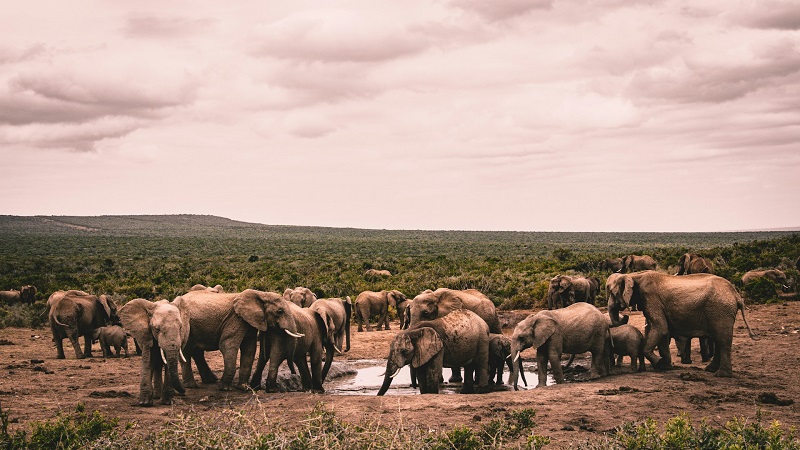Photographing wildlife can be quite adventurous and may entail a few dangers as well. However, it is also one of the best and most rewarding types of photography. Nothing compares to getting close and personal with a majestic elephant, fierce lion, or beautiful deer and capturing those moments in photos. It offers so much excitement and buzz which you can’t experience anywhere else. Therefore, we have rounded up 33 wildlife photography tips for those photographers who feel the same.
What is Unique about Nature and Wildlife Photography?
Taking a dream shot of an animal requires a lot of practice, some patience, repeated attempts, and a bit of luck. You have to wait for all the things to get in order. You as well as your subject have to be at the right place at the right time.
Perhaps the best thing about wildlife photography is that you do not need the animals’ permission to shoot them. Similarly, they don’t get annoyed or bored as humans do. But – it can be a daunting and rather perilous task to take stunning photos of the animals. You cannot ask them to stay put and pose for you. You must learn how to make the most of the situation and leverage what you have got.
All the challenges associated with wildlife photography can easily put a beginner or even intermediate away. However, you need not worry because we have covered everything ranging from choosing the best photography equipment to camera settings, photography rules, using weather and time, and everything else to consider for capturing wildlife.
How to Get Into Wildlife Photography
Just like all forms of photography, becoming a professional wildlife photographer has prerequisites. “Professional” also means different to different people. Some argue you are a professional if even if you are earning a few hundred dollars from your ventures. Others argue that you have to earn a major chunk of your income from a certain activity if you want to become a professional.
However, there is no real requirement to be called a professional in any field. You are a professional if you are offering your services for payment. The only requirement in the case of photography is to take good pictures. You must practice a bit more and spend some time with experts if your photos are not up to the mark before running to the forest. Similarly, learning is a continuous process. Even the best photographers in the world learn constantly.
Wildlife photography is also the toughest branch of photography for many reasons. For example, wildlife photographers usually have to spend a lot of time alone behind their cameras. Similarly, you must be a nature lover to succeed in this particular field. It can also be challenging for a beginner photographer to develop the right skill set or decide where to turn to.
However, you can go through the following nature photography tips for beginners for you to easily get into wildlife photography.
Best Tips for Wildlife Photography
The following are the best wildlife photography tips according to our experts. These tips or methods have proved to be most beneficial and useful over time. The experts on our panel have been implementing countless tricks for a long time. They have picked these tips after putting them through trial and error and based on what they do and their overall benefits. Rest assured, they have helped us improve our wildlife photography skills. Similarly, you can apply them anywhere you want whether you are on an African Safari or in the park next to your home.
1. Learn Basic Photography
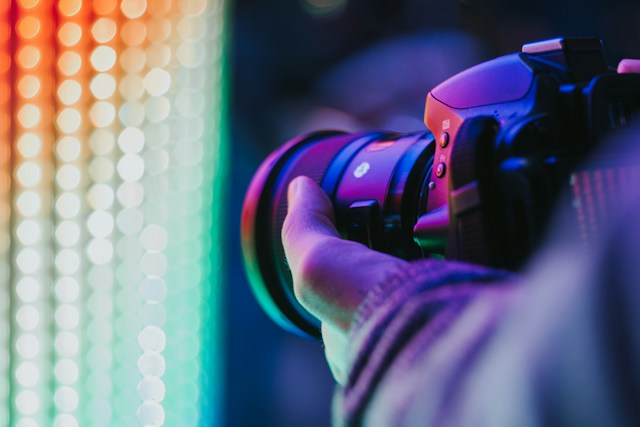
You must learn basic photography skills to become a wildlife photographer. Learn how to use a camera and other photography equipment such as lenses and tripods. Furthermore, understand how to take good photos in different light conditions and times of the day. It is also a good idea to photograph easier subjects such as humans, buildings, vehicles, etc, to get comfortable with a camera.
Wildlife photography is very difficult, to be honest. You have to take photographs of the animals on the move instead of stationary subjects. Therefore, you don’t need to start capturing wildlife from the start. You will find it challenging to get the right shot. So, it is better to learn the basic tricks of the trade before going all out in the wilderness.
2. Assist a Professional Photographer
After learning basic photography, it is time to assist a professional photographer. Almost all wildlife photographers need assistants. Assisting an expert will help you hone your skills, better understand the profession, and get on-the-job training.
3. Look for Picturesque Environments
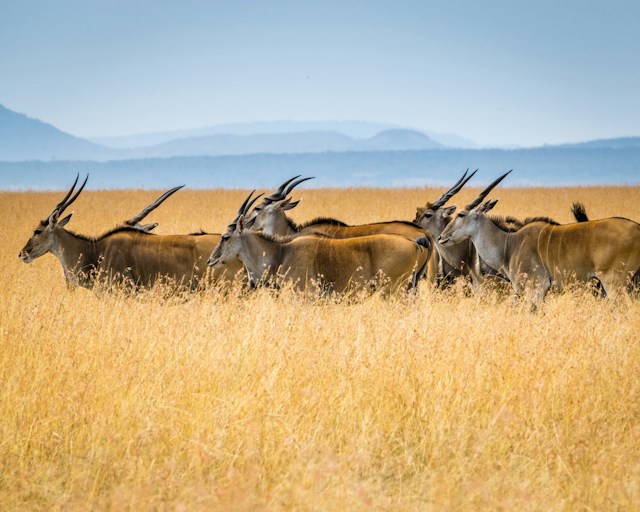
The basic requirement for good wildlife photos is to find a naturally beautiful and picturesque spot (more on it later). However, you need not go to the jungle to capture wildlife. Just go to your rooftop and you will find a lot of birds flying above to click.
4. Start with Basic or Safest Animals
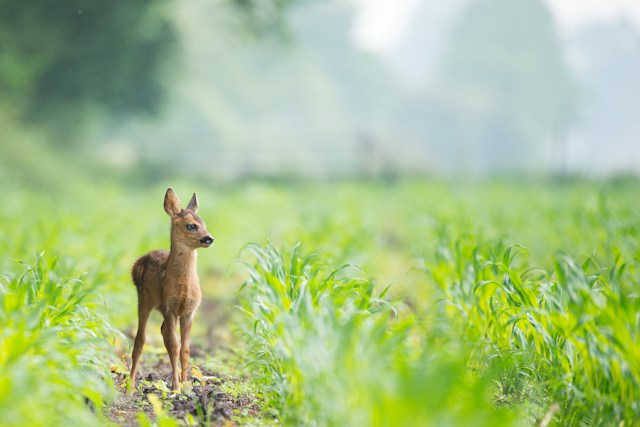
One of the best wildlife photography tips is to start with basic or safest animals. For instance, you can easily click an eagle flying in the sky or a stray dog or cat wandering in the streets. It is tempting to photograph snakes, lions, crocodiles, or rhinos but it is a risk you don’t want to take in the initial stages of your career.
We will start with the general tips for beginners before moving on to more advanced stuff like camera settings and photography rules.
5. Choose the Right Camera
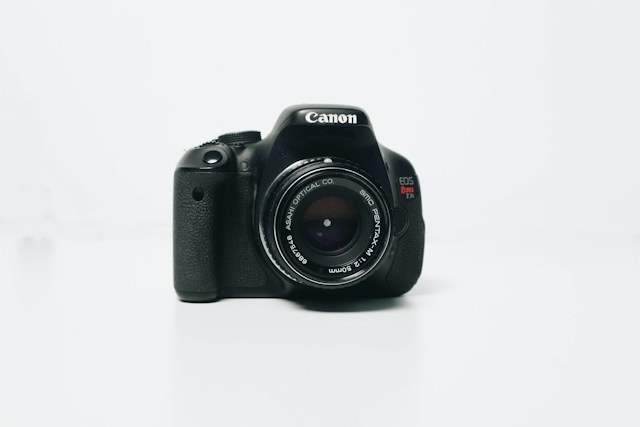
You can shoot wildlife with your smartphone or a regular camera. However, it is better to get a good camera with all the features for wildlife photography. You can choose from many different types of cameras but the cameras most suited to wildlife photography are Is Mirrorless Better Than DSLR?. The mid and high-end models are compatible with different lenses. You can set them manually and they are weather-sealed as well.
Only a weather-sealed camera with a rugged body can sustain in the wild for long. A regular camera, on the other hand, will quickly succumb to the harsh elements. Although cameras with extra protection are expensive yet they last for years. You don’t have to replace them after only a year or so. Therefore, they turn out to be more economical than a regular camera in the long run.
6. Use the Right Lens
Another thing you need to get right is the lens. Most wildlife photographers use telephone lenses because they allow you to take photos from a distance. They also feature in-body or optical image stabilization to minimize shaking caused by the extreme magnification. Obviously, the more features, the more expensive will be the lens.
However, novices can also use the cheaper plastic models to learn tricks of the trade. They don’t come with image stabilization but you can put them on a sturdy tripod to keep them steady. Similarly, you can minimize blur by using high shutter speed.
7. Protect Yourself and Gear from Elements
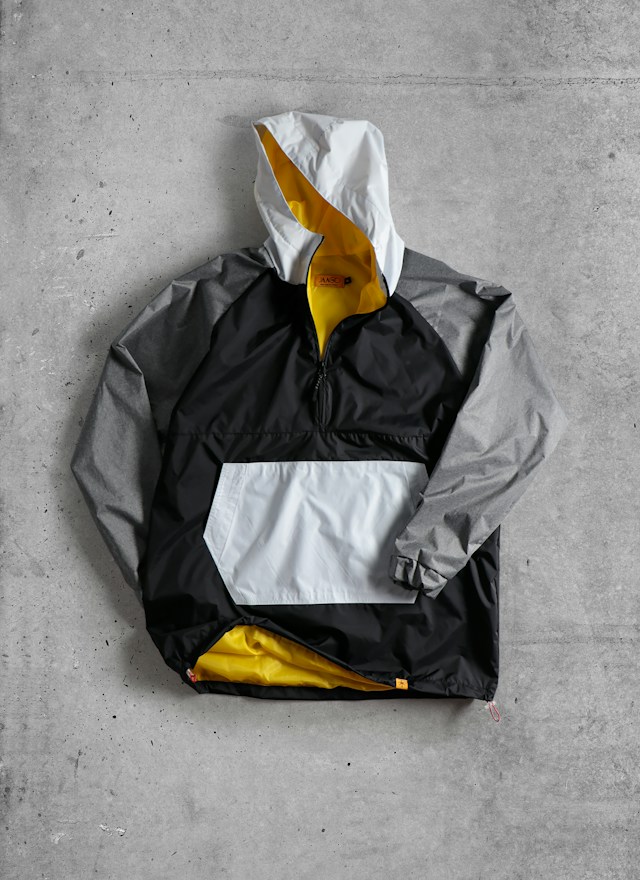
It is not enough to only have the right photography equipment. You must also have the essential gear to protect your gear and yourself from the elements. For example, you can shield yourself from rain or harsh sun using a hat. Most photographers prefer a bonnie heat because it protects the entire head rather than just the face. Some hats also come with mosquito nets to keep you safe from these nasty creatures.
You also need a big raincoat to cover your entire body, your camera, and your backpack. It can also act as a mini tent in case you are caught in a thunderstorm or torrential rain.
Wearing a thick jacket to keep warm in colder climates is a no-brainer. Another thing you can buy is the specially-made gloves for photographers. These gloves have a hole in the pointing finger for you to shoot easily.
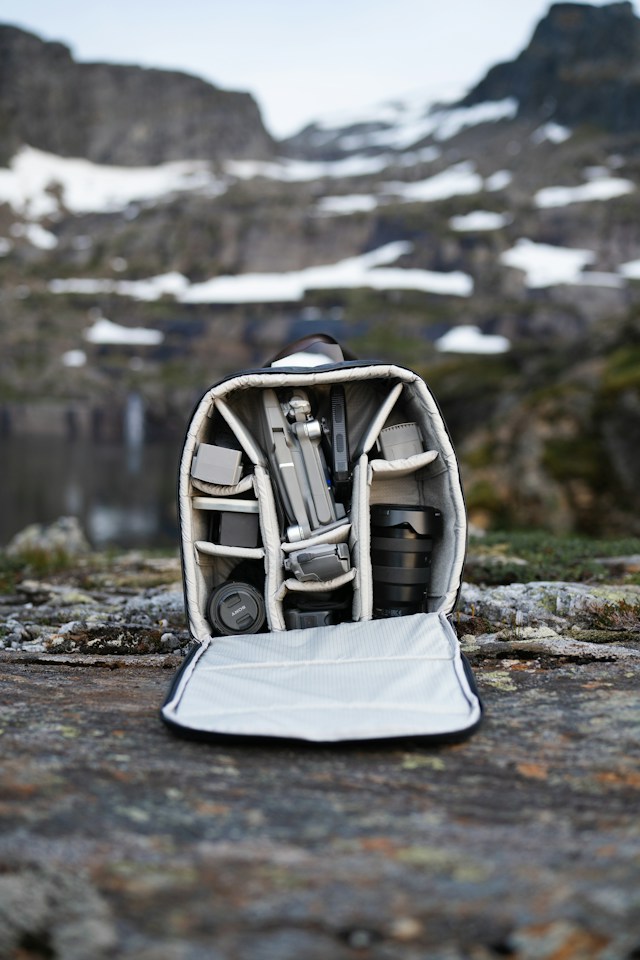
When it comes to protecting your gear, a waterproof camera backpack will do a lot of good. However, only go for lightly colored backpacks because the bright ones can distract wildlife while you are shooting. Just like a backpack for camping, a good camera backpack also has various compartments for cameras, lenses, batteries, memory cards, and even dedicated spaces for a first aid kit and clothes.
You must also have a rain cover for your lens and camera. The cover does not only shield from rain but also mud, dirt, dust, and other harmful particles. Some photographers also cover the camera body with a clear food-grade wrap or a shower cap for added security.
8. Use a Sturdy Tripod
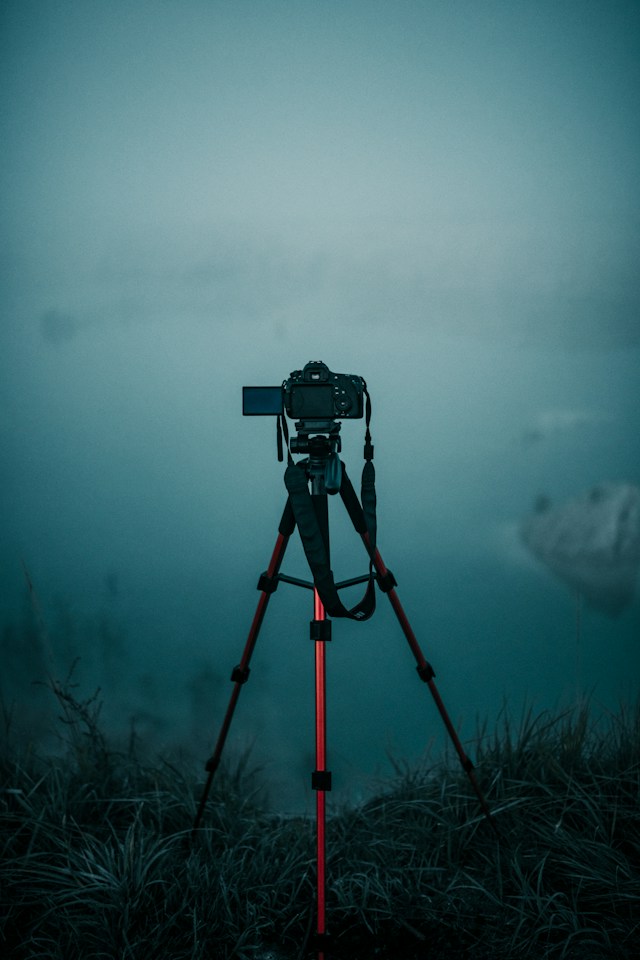
You must bid farewell to the cheap tripod you bought from a departmental store if you are serious about taking pictures of animals in the wild. The flimsy or weak plastic legs of a tripod cannot support a camera with a heavy lens. Get a tripod with carbon fiber or aluminum legs to make your equipment safe and steady. Such a tripod will be expensive but it will never collapse under the heavy weight.
9. Learn more about the Animals You Want to Photograph
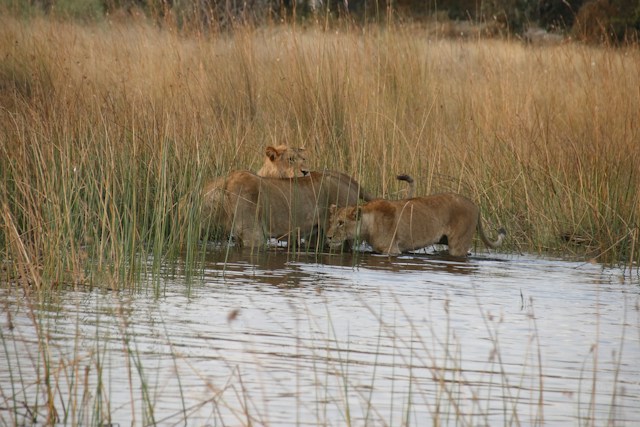
This is perhaps the most important animal photography tip anyone can give you. No matter how sophisticated your equipment is, you cannot take good photos of the animals if know nothing about them.
You cannot command animals what to do, where to go, or how to pose and this is what makes wildlife photography particularly difficult. You will simply miss some of the most exciting actions or miss your shot completely if you cannot read animals’ behavior. Studying the animals you want to shoot is the best method to capture great shots or at least increase the chances of doing so. Familiarize yourself with your subjects before setting foot in the forest.
For example, find out what time of the day and where you can find lions if you want to capture them. Yes, you can learn to find animals in the wild but most people don’t realize this. Animals are extremely good at hiding. Therefore, it is impossible to spot them unless you know how they look in the wild, how they behave, and what clues they leave behind.
For example, dusk is the best time to find a deer. Similarly, you may also find several of them at or close to the vegetation they love to eat. Some of their favorite plants are wild grasses, plants, and weeds. Taking care of these simple things will result in exhilarating and highly fruitful animal photography sessions.
You can also accompany nature lovers and local wildlife photographers to learn. Closely observe how they move and behave when they are close to animals. It will greatly help you with your movements once you start going in the wild alone. You can acquire new skills and improve those you already have by joining experts and people who know both the animals and the forest. You can never learn these skills from any wildlife photography guide or book.
10. Practice Shooting
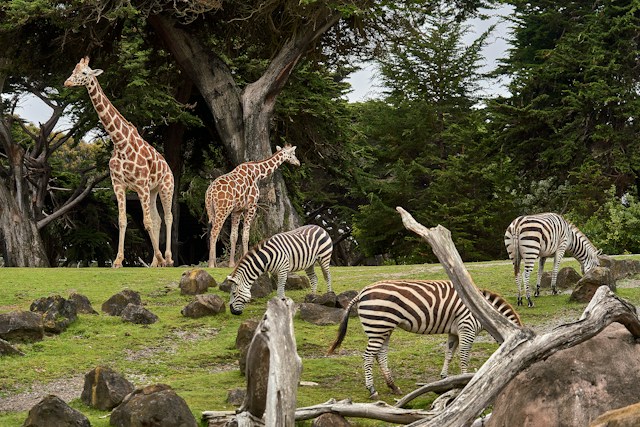
You may already know that squirrels, birds, and even stray cats are very alert and fast. They would run far away from you even before you get close on most occasions. This is true for almost all wild animals as well. Therefore, it is better to practice shooting little creatures, birds, and stray animals in your neighborhood before embarking on a Safari. It will help you capture more elusive animals much more easily.
Practicing animal photography at a local zoo can also work wonders for you. It will not only hone your skills but it is also the safest place to capture wild animals. The best thing about zoo photography is that you can acquire useful information about different animals from the animal experts working there.
11. Keep a Low Profile
You can chase animals away through unnecessary movements and voices. Animals scare easily and therefore, you need to stay calm and keep a low profile to avoid scaring them off. Only approach them and that too ever so slowly when they are not looking at you. However, try to maintain a safe distance, pick up your camera gently, and press the shutter.
You should only press the shutter when it is necessary. It can spook the animals by the incredibly loud noise it makes. Some cameras also have a silent shutter feature, making the task a bit easier. Similarly, resist the temptation of using the burst mode. You must restrict its use to shooting fast action such as running animals. Even then, you must ensure that the animals are preoccupied with hearing any unnatural noise produced by the shutter.
12. Don’t Lose Patience
Patience is one of the biggest virtues when it comes to taking pictures of animals. You must pay close attention to the movement of your subjects and what is going on around you. It is essential to understand what they are doing and what they are about to do. You will learn how to anticipate their actions if you study them for a long time. The right situation or opportunity will present itself if you are patient and willing to wait.
The most common mistake that beginner wildlife photographers commit is always looking through the viewfinder. The viewfinder only shows you what is going on around the animal. You must develop the habit of observing the surroundings with the bare eyes. It will help you see everything better and clearly. Only look through the viewfinder when you are ready to take a picture.
13. Look for Good Locations
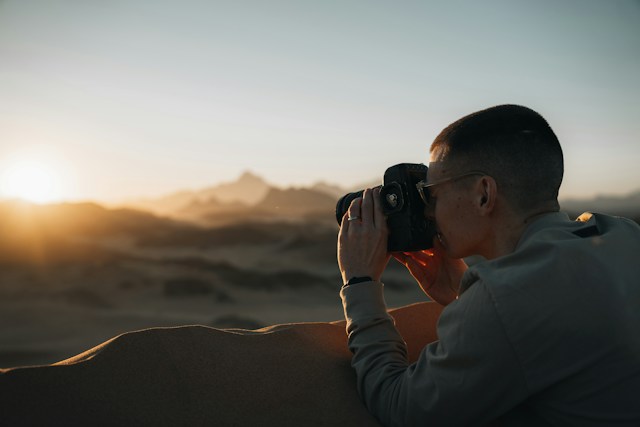
Another beginner wildlife photography tip is to always start in the wildlife parks. They offer the best locations for wildlife photography. Besides, you can also get a list of the animals in the park. Similarly, people working there can even tell you how you find the animals and their exact location.
Keep in mind that all the wildlife parks or forests are vast. Therefore, you need to pinpoint your desired shooting locations. Otherwise, your chances of getting lost in the wilderness will be pretty high.
Explore your target location once you reach it before setting up your photography equipment. Try to find natural features and scenic areas such as flowers, trees, mountains, rivers, lacks, or fields and add them to your images.
You may have to wait for animals for a long time. Therefore, try to find a comfortable and safe place where you can lie down for hours. Sometimes, you will have to reach there before dawn and stay there till dusk because different animals come out of their dens at different times of the day.
You must also abide by the rules and regulations of every area you visit for wildlife photography. Learn what you are allowed to do and what you are not allowed. This will enable you to keep yourself and the animals out of the trouble.
14. Work the Light
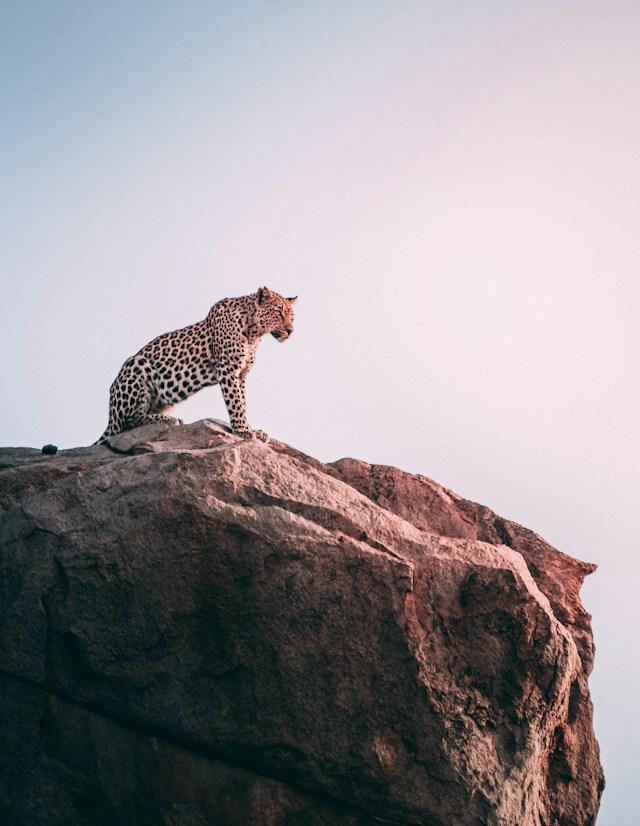
One of the first wildlife photography tips I got from an expert was to work mostly in the hours of golden light. As mentioned above, it means getting up early in the morning and getting to the place of shooting before sunrise. The best time to photograph animals is from dawn to 11 am at least where I live. The light is too harsh between 11 am and 5 pm. Therefore, it deprives the images of the needed spunk. Overcast days, however, are the exception because the clouds filter the light evenly by serving as a massive softbox.
You can shoot all day on days like that. The only condition is to have wildlife subjects to shoot.
It is also imperative to learn how to make the most of the natural light in wildlife photography. Sometimes, you will find yourself in a place with less than ideal or inadequate light. On other occasions, the light is good but it comes from the wrong direction. To make matters worse, you cannot move to a better position to use light to your advantage.
Fortunately, you can add plenty of modes to a photog by using the light from the wrong direction. It is tricky to get beautiful images while shooting into the light. However, even less than ideal light offers some really exciting images if you know how to use your gear (more on it below).
15. Get Closer and Wider
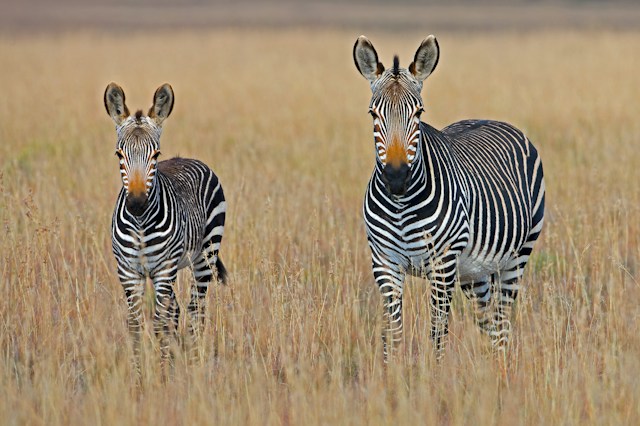
A larger number of photographers suffer from focal-length obsession. They are so obsessed with getting the biggest or longest focal length in the world that they close the doors to other shooting opportunities altogether.
The choice of lens for wildlife photography depends on the location. For example, you do need a 600mm telephoto lens just to get a clear shot in wide and open spaces. However, we are too preoccupied with getting as close to the wildlife and isolating it from its surroundings. You can easily get such a shot in a controlled location such as a zoo, to be honest. There, you can find a captive subject that has nowhere to go but to remain in its cell. It does offer a perfect background but what it lacks is the real environment.
Morkel Erasmus, a renowned wildlife photographer, often uses a wider lens to capture a greater field of view. It gives the viewers a better idea of the actual location, environment, or habitat of your subjects. This is true for every single animal you shoot ranging from a squirrel to deer, big cats, and elephants.
Shooting wider also means getting closer to the animals like get-in-your-face close. The best way of doing so is to use a longer lens with an optional teleconverter or to change your position. It will help you take different yet very interesting images of animals and birds.
16. Try to Capture as many Animals as Possible
This point is pretty self-explanatory. Most wildlife animals like to spend their time alone. It is often said in wildlife photography that one is company and two is a crowd. This is especially true if animals are looking for food or shelter.
For example, a solitary cheetah may seem very happy, minding his own business under a shade. Throw another cheetah into the scene and you will have a great chance to capture their interaction.
17. Be Prepared to Shoot in Bad Weather
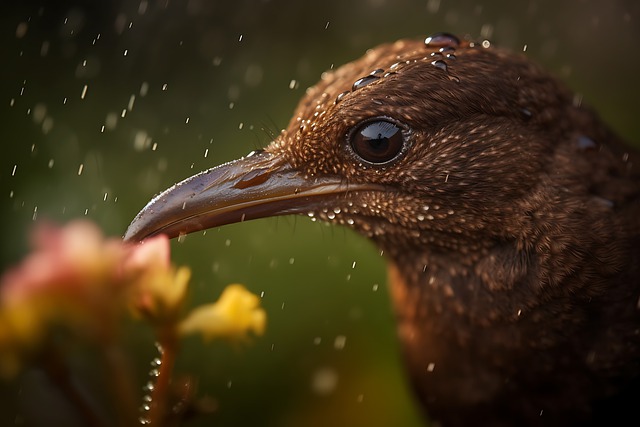
Many people question how to photograph wildlife beautifully when the weather is bad. Bad weather, in my opinion, offers the best vistas to take the most stunning images of the animals. Everyone can take good images of animals in the bright sunlight. However, there is nothing special or unique about those images. People love to see things like animals struggling in the snow or soaking in the torrential rain. Your images should throw light on how animals live in the wild.
Sometimes, it is the inclement weather that delivers the most captivating shots in wildlife photography. You can impart a mysterious aura to a place by shooting in the dense fog. Similarly, you will get a complete background while shooting in the snow, isolating your objects from the surroundings by creating a stark contrast.
However, you must take necessary safety precautions and prepare beforehand before photographing in bad weather. For instance, try your level best to keep your camera dry even if it is weather-sealed. Also, always cover the lens when it is not in use.
18. Don’t Forget Your Health and Safety
This is perhaps one of the best wildlife photography tips for beginners. You can only survive in the wild and take stunning photos of the wildlife if you are in proper shape and health. You should also try not to get sick while in the jungle because it can result in drastic consequences. Therefore, always wear proper clothes to stay warm and dry.
19. Also, Give Some Attention to Smaller Animals
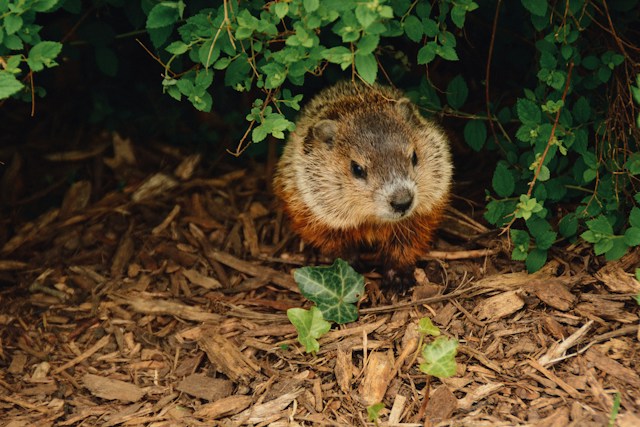
Most wildlife photographers solely focus on something called charismatic megafauna. Yes, you have guessed it right. Big animals such as elephants, cheetahs, tigers, lions, and rhinos get the most attention. You should not do that. It is personally satisfying as well as dramatic to take good photos of big cats. However, there are other kinds of wildlife as well and they deserve equal attention. All these animals are not only interesting but some of them are very beautiful as well.
Always look around when you are waiting for your next shot or hiking in the wild. The variety and beauty of the animals available for photography will amaze you to your core.
20. Apply Rules of Composition
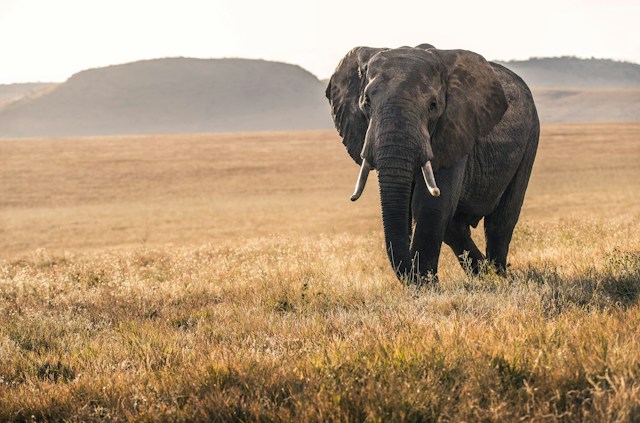
One of the most common tips for nature photography is to apply the rule of thirds just like anything else. Always divide your frame into a grid. Subsequently, you can create a stunning balance in your images by placing the animal on one of the grid intersections. New photographers may find it hard to imagine the lines. However, most cameras allow you to switch on the grid on the screen as well.
Another rule of composition is to provide enough room where the head of your subject is pointed. Reframing your shot in the same direction as the head of the animal will always result in better and more balanced shots. Your images may look claustrophobic if you don’t follow this rule.
Once again, we would suggest incorporating the subject’s environment in your photos. It can be as beautiful and fascinating as the animals themselves. Take your audience on some sort of journey, showing them where and how their favorite animals live.
Camera and Lens Settings
Next, we will talk about camera and lens settings for wildlife photography in our wildlife photography tutorial.
21. Choosing the Right Camera
Choosing the right camera for wildlife and nature photography is more difficult than you can imagine. You need a camera that is compatible with different types of lenses. Therefore, always go for a mirrorless camera or a DSLR system. Similarly, the camera you pick should also have superfast autofocus as you mostly have to capture moving animals and birds. Not to mention, the burst mode should match the speed of autofocus as well.
22. Sturdiness and Weather Sealing
The camera should be sturdy and weather-sealed to withstand harsh elements. You, as a photographer, always tend to be kind to your camera. But – you would not hesitate to push it to the limits if a fantastic shot calls for it. Excellent weather sealing is the hallmark of all the premier cameras and lenses. High-end cameras have weather sealing on almost everything ranging from rubber gaskets on battery doors to all the buttons, and communication ports. They even have extra seals on body joints and lenses.
Although they may not be entirely waterproof yet such cameras can take a lot of photos in snow or rain before creating any problem for you. You also get more time to dry the cameras and remove the moisture before it damages the delicate circuit board thanks to these extra seals.
23. Full Frames or APS-C Sensors
Cameras with full-frame sensors are all the rage nowadays. However, smaller APS-C sensors still hold a slight edge when it comes to shooting wildlife and nature images. Cameras with APS-C sensors provide you with some extra zoom as they feature 35mm lenses. For example, the brilliant 400mm lens you have been using will be equal to 600mm on an APS-C camera.
24. The Best Lens for Wildlife Photography
Choosing the best lens for capturing wildlife is even more cumbersome than getting the best camera. There are many types of wildlife and nature photography. The choice of lens depends on how close you want to get to the subject. Some animals are quite dangerous while most of them are skittish. Therefore, it is best to have the longest telephoto lens in your armory. However, telephoto lenses can be expensive and you have to watch your budget here as well. But – you should consider the longest telephoto lens with the widest aperture if money is not a problem.
A wide aperture keeps the shutter speed of the camera higher which is useful for wildlife, especially for shooting in low light. You can also read a great article on Exposure Triangle to learn how to use ISO, aperture, and shutter speed to your advantage.
You can take photos from long distances as well as up close using 18mm-100mm lenses. Some budget lenses even have optical stabilization (OS). You just need to dig deeper to find them. The OS minimizes or eliminates shaking caused by the extreme magnification. Similarly, the telephone lens should have a focal length of at least 100mm if you do not require zooming capabilities. The old film cameras have the best lenses because they are not only durable and affordable but they feature quality glass as well.
25. Buy a Cheaper Plastic Lens
Telephoto lenses with features like optical stabilization are generally very expensive. However, you can buy cheaper lenses with plastic bodies while you are still in a learning phase. Obviously, they won’t have optical stabilization but they should not be a problem for you. You can always mount your camera on a tripod to keep it steady. Similarly, the best way to minimize blur is to use a high shutter speed.
26. What about Prime or Zoom Lenses?
Prime or zoom lenses also enable you to take stunning wildlife photos. However, the zoom lens will always stay on its maximum setting if it is too short for your liking. Wildlife photographers don’t mind using a lens that is too close to a long telephoto lens. The only concern here is that you would always get the biggest focal length you can think of.
27. Don’t Ignore Wide Angle Lenses
Keep in mind that the best camera for wildlife photography does not always come with a long lens. Sometimes, a wide-angle lens can also take a great shot, showing more of an animal’s environment, habitat, and behavior instead of the animal itself. Sometimes, you may also need a macro lens to capture insects and other smaller animals. You need a 100mm lens with an aperture of at least f/2.8 to capture the best of the microscopic animal world.
How much can You Make per Year as a Wildlife Photographer?
This is the first question you would ask yourself if you are considering wildlife photography as a career prospect. It is difficult to answer this question correctly.
Wildlife photography is a very tough and rather big industry. You could earn anywhere from $20000 to $50000 per year if you are images are up to the mark. However, you have to set aside some of this money for your expenses as well. The total expenses normally depend on your business model and approach to your profession.
Some “celebrity” wildlife photographers are earning a six-figure income. However, there are very few of them. More importantly, they have achieved this status after spending years in the industry.
28. Perks of a Full Time Wildlife Photographer
Being a full-time wildlife photographer means you are self-employed. It provides you with a glorious opportunity to grow your business and take it to new heights. You could exploit different income streams to earn a handsome amount of money. You only need to remain passionate, focused, and determined.
Wildlife photographers around the world are monetizing their images in many different ways. However, the industry is constantly evolving and you have to keep abreast with the changes and stay on top of the trends to earn a steady income. Similarly, you must react to the desires and demands of your clients to remain relevant.
Gone are the days when you would just sell your images to stock websites and still make a five-figure income. The advent of microstock agencies means those days are well and truly over. Now, you can earn money from several revenue streams most important of which are as under.
29. Sell Images to Newspapers
One of the best methods of earning money from your wildlife images is to sell them to newspapers. After all, you have every right to get your images published in newspapers and glossy magazines. It can also help you earn some money as a beginner and start your journey on the right note.
30. Sell Your Images at Craft Fairs
Another great way to start selling your images as a novice is to attend craft fairs and markets. Many photographers avoid such fairs because they have to invest some money in product stocks. There is always a risk of losing money if you fail to sell your photos. But – you should not hold back if you believe your photos are up to scratch and have everything it takes to sell.
31. Leverage the Holiday Season
You can make a lot of sales in the holiday season as well. For example, people from all over the world love to spend money and buy gifts for their loved ones during festivals like Christmas. You just need to find a popular event or market near you and book a table there.
32. Arrange Wildlife Photography Workshops
More and more photographers, including wildlife photographers, are running photography workshops these days. This is another avenue to explore if you seriously want to pursue wildlife photography as a profession. However, you must have all the knowledge about wildlife photography and the confidence to arrange these kinds of workshops.
An increasing number of people are looking for opportunities and tuition as wildlife photography grows in popularity. That is why photographic tours and workshops are sprouting like mushrooms all around the world. However, a photographer has to put in a lot of effort and hard work to run them. Your clients would simply desert you if you don’t provide them with a really good experience. The only outcome will be zero bookings besides a tarnished name.
33. Give Presentations and Talks
You can also give presentations and talks in nature groups, camera clubs, and other photographic societies. They are always in search of speakers to educate their members. It is a good and fun way to generate some income provided you don’t get nervous while talking to a group of people.
What you can do is create a PowerPoint presentation with your wildlife images. The presentation needs to flow well besides having a good story. Keep the length of the presentation between 30 minutes and an hour. You would be a winner if the presentation was entertaining as well.
So, start contacting photography clubs immediately and let them know you are available for talks and presentations.
Also Read: 20 Portrait Photography Tips to Take Stunning Portraits
Final Thoughts
Concluding our ultimate guide to wildlife photography tips, we must say that it may take you years to fully master the art of wildlife photography. But – it is a rewarding experience where you will learn something new every single day. Your hard work will eventually pay off if you stick to it. Wildlife photography does not only make you a famous photographer but it also makes you truly love nature.

